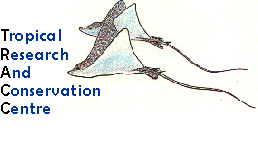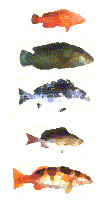|
|
|
|
Cyanide fishing market forces
|
 |
|
|
|
| The live reef fish market currently imports an estimated 50,000,000 lbs. of grouper and wrasse with an estimated 60% grouper and all the wrasse coming from wild capture. Fish buyers complain that the fish in Sabah and the Philippines are hard to find and within two to three years, most of Indonesia will be fished out of commercial stocks of grouper and wrasse.
Hong Kong is the major trading and import market for live reef fish, but many other countries are involved in the industry, with Taiwan, Singapore and Japan importing significant quantities. |
HUMPHEAD WRASSE BEING TRANSFERRED FROM THE HOLDING PENS TO THE LIVE FISH BOATS FOR EXPORT. |
|
|
LIVE LEOPARD GROUPERS / CORAL TROUT FOR SALE IN A RESTAURANT. |
The selection process for the live fish to be eaten has become part of the dining experience. The host honours his guests and improves his social status by offering food that is rare and expensive. Because of this, the LFT is unaffected by normal market forces; the rarer, larger fish which obviously cost more are preferred simply because of the status symbol they represent. The fish caught for the live fish trade are sold at premium prices so that they can be displayed alive in a restaurant and individually chosen by the customer at the start of the dinner. These very fresh fish are preferred for Chinese cuisine, which typically serves steamed fish in a delicate sauce as the highlight of a meal.
|
|
Price trends in the region depend on both supply from wild-capture fisheries and the capacity of aquaculture to commercially spawn and raise desired species. The premium paid for live reef fish compared to fresh-chilled fish is substantial. In Hong Kong, consumers pay 400- 800% more for live fish. In 1995, prices in Hong Kong exceed $30-40 per kilo for ordinary groupers, $40-60 for red coloured groupers and $60-90 for humphead wrasse (Cheilinus undulatus) or polka dot grouper (Cromileptes altivelis). |
In 1999 prices had risen substantially. In restaurants in Kota Kinabalu, Sabah, cyanide- caught groupers and humphead wrasse are offered for sale in live food restaurants at prices exceeding (US$225/kg); more than a months salary for a Malaysian office worker.
With this level of financial incentive, fishers can spend considerable time searching reefs for a single fish. |
Fishers operating out of Kudat, north Sabah admitted that they frequently have to spend more than a day to find and catch the larger fish. "Catches were better before," was a common complaint. In January 1999, storage cages were full, but by July, the cages were nearly empty and the owners were admitting that the fishers weren't able to catch enough fish. The table below shows that catches have obviously declined further.
|
|
Numbers of fish in commercial LFT holding cages
|
|
WHAT ABOUT FISH FARMING?
At the moment, the preferred species cannot be commercially spawned and farmed and continue to attract especially high prices. There are no farms for humphead wrasse, giant grouper or baramundi cod. Farms for other grouper species are being developed but consumers are biased against aquaculture reared fish. Taste seems to be less of an issue; gourmets could not readily differentiate between farmed and wild caught fish. Until there are major changes in appeal of the aquacultured product, demand for the wild-caught fish will remain strong and prices higher than for farmed fish of the same species. |
|CYANIDE FISHING| |REGIONAL THREAT| |THREATENED SPECIES| |MARKET FORCES| |SOCIAL AND ENVIRONMENTAL COSTS|

![]()
SEE ALSO:
|POPULATION DECLINES IN LARGE FISH STOCKS| |GROUPER SIZES IN AREAS WITH AND WITHOUT FISHING| |BLAST FISHING|
FISH POPULATIONS AROUND SABAH
 |
SMALL GROUPERS |
| HUMPHEAD WRASSE | |
| SWEETLIPS | |
| RED + BLACK SNAPPERS | |
| CORAL TROUT |